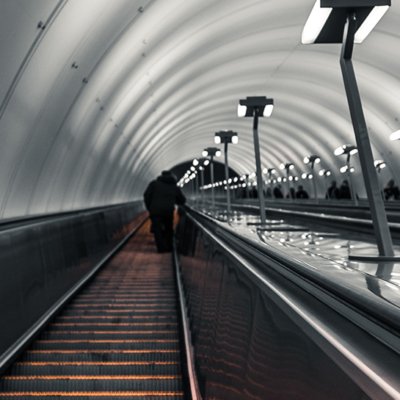Article 5- Escalators and Moving Walks Transportation
Dos and Don’ts of Escalator and Moving Walk Transportation
Nowadays, escalators and moving walks play a significant role in human life. It is almost impossible to imagine a life without them since the architecture of modern buildings is in a way that they need escalators and moving walks to facilitate communication for people. Escalator and moving walks are spotted in shopping malls, department stores, stadiums, subway stations, airports, and other public places where there is a massive number of people commuting.
Since the escalators and moving walks are large mechanical machines, they must be transported and installed delicately. Incorrect transportation can cause serious and irreparable damages to escalators and moving walks, and to people in the installation area as well. This process requires significant measurements for secure and appropriate transportation of the escalator or moving walk.
How to Lift Escalators and Moving Walks
There are tips for lifting the escalator or moving walk full assemblies or sub-assemblies which cannot be handled by hand based on EN 115-1:2017 mentioned in the following:
- They must either be equipped with fittings for movement by a lifting device or transportation means, or
- Be designed in a way that such fittings can be attached (e.g. threaded holes), or
- Be shaped in a way that the lifting device or transportation means can be attached to it easily.
The escalator or moving walk truss comes in a chassis form and it must be lifted from the points that are specified during its design. There are some points which are called “eye lift” designed in the escalator or moving walk to facilitate the attachment of towing wires to the device. Lifting the escalator or moving walk from the unauthorized points and directions could contort the machine irreparably or could cause defects to its performance.
Different types of cranes and devices are used for lifting the escalators and moving walks in different situations. Types of the cranes and devices used in this respect are as below:
- Ceiling cranes for transportation at factories or garages
- Crane trucks for loading and unloading purposes
- Forklift trucks for lifting
- Tower cranes for unloading and installation
- In-plant cranes for lifting purposes
- Manual chain hoists for installation
- Aluminum gantries for installation
- Coupling devices for towing the escalator or moving walk
- Escalator saddle support for putting the escalator or moving walk on the ground
Some of the above-mentioned lifting devices are mostly used when there are space restrictions or when the ceiling is of a low load-bearing type.
Different Ways to Transport Escalators and Moving Walks
When escalators or moving walks are going to be delivered to a close destination, their transportation does not need to be done by containers. Therefore, they are usually ordered fully assembled in one part and are transported by truck trailers. On the contrary, containers are used for transporting escalators and moving walks that are supposed to be delivered to a far destination.
Transporting escalators and moving walks is possible in different ways; by land or railways, by sea, or by airways. Since transporting them by airways is costly and very rare, they are usually transported by land, by sea/ocean, or by a combination of them.
In case the escalator or moving walk is long, or space conditions of the project are limited, they can be delivered in two or more parts. The escalator truss is constructed in few parts, and therefore, the parts will be assembled by socket-headed bolts attaching to the pre-drilled points on the plates at intersection lines. Also, Balustrades and handrails will be delivered in separate boxes to the destination and the final mechanical installation process will be done after mounting the truss on its location in the project area.
Note: If the escalator or moving walk is lengthy and does not fit the container, they can be delivered in two or more parts. The parts will be placed on each other, with certain spacers between them to prevent their contact with each other inside the container.
Standard Packaging of Escalators and Moving Walks
The escalators and moving walks must be completely covered and shrink-wrapped by heavy gauge polyethylene material at the factory before transportation and delivery, to avoid any scratch or harm to the escalator or moving walk during transportation, installation, or during the time it has to remain in the building before installation.
Given all the information above, it should be noted that delivering the escalator or moving walk in separate parts is inevitable in some cases. Therefore, all the above-mentioned points must be specified before manufacturing.
In addition. When choosing a route for transportation in the installation area, safety must be the first priority. As a result, the transportation route must be safe and without any object hindering the way.





